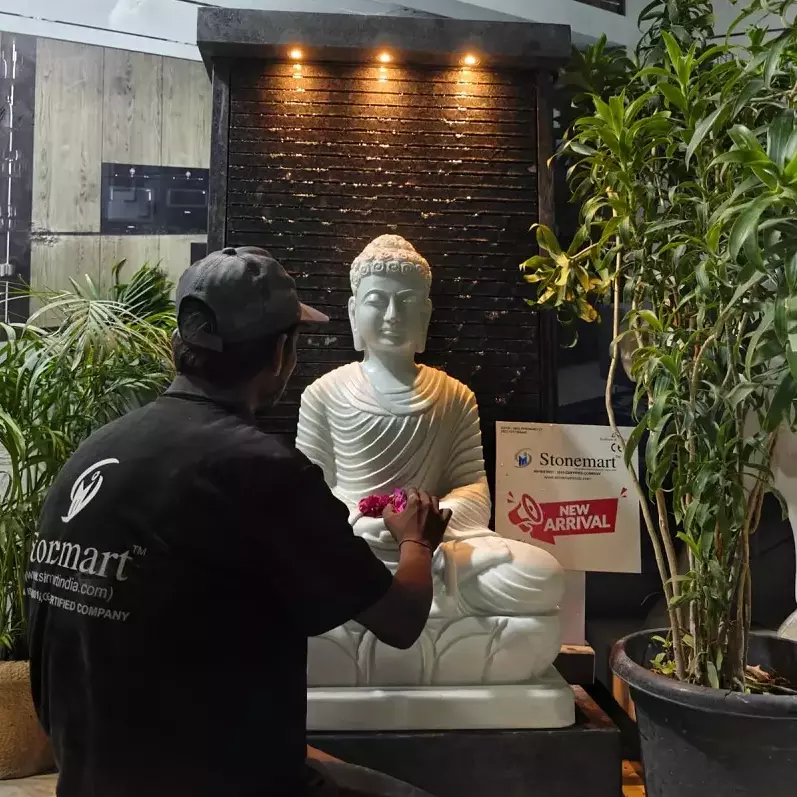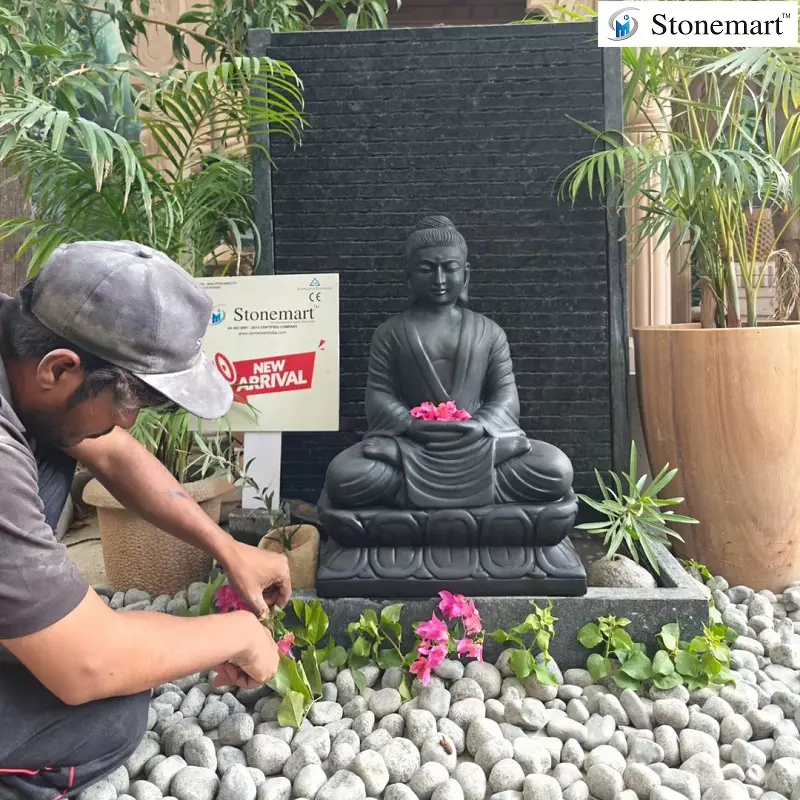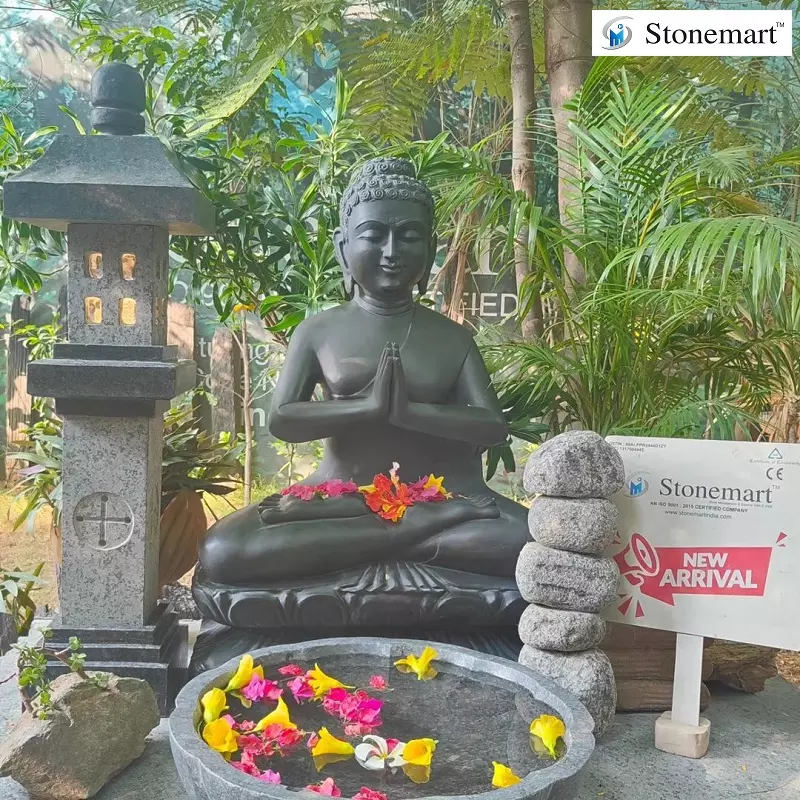What is the Difference Between a Dhyana Mudra Buddha and an Anjali Mudra Buddha Statue?

Lord Buddha is the master of different mudras of knowledge, spirituality and meditation. These mudras have been depicted upon different sculptures of the Buddha which generate different types of auras with respect to their Vastu and Feng shui effects.
It is important to note that both dhyana mudra and anjali mudra of the Buddha are an integral part of our yoga culture. But when we relate it with respect to the Buddha, then we would find that there are considerable number of differences between the two.

MUST READ: What is the Difference Between an Abhaya Mudra Buddha and an Anjali Mudra Buddha Statue?
Here, let us emphasis upon the distinctions between a dhyana mudra Buddha sculpture and an anjali mudra Buddha sculpture one by one -
| Criterion | Dhyana Mudra Buddha Statue | Anjali Mudra Buddha Statue |
|---|---|---|
| Origin | The origin of dhyana mudra is associated and the fourth dhyani Buddha named Amithabha. The dhyana mudra of the Buddha is associated with the quest of enlightenment through intense focus and clarity of thought before getting transformed from Siddhartha to the Buddha. | Anjali Mudra is one of the compassionate mudras of the Buddha that he took to indicate welcoming someone to the heart. The mudra was taken by the Buddha to showcase his respect and devotion towards all the living beings. |
| Appearance | Here, the appearance of the Buddha is in his meditation mudra with a shape of triangular form with each side of the triangle representing the three principal pillars of Buddhism, namely the Buddha, the Dharma and the Sangha. There is a calm and composed expression of the Buddha. | The Anjali Mudra is formed in a namaskar mudra with the placement of the palms of both the hands right in front of the chest. The fingers of both the hands are aligned in a vertical manner. In specific cases, the thumbs of the hands are pointed backwards. The practice of this yogic mudra links the left and the right hemisphere of the physical brain to improve the overall physiological and motor control of the body. |
| Vastu & Feng Shui Effects | Highly beneficial for the meditative state of mind and clarity of thought. The presence of this Buddha within the vicinity both indoor and outdoor establishes peace, harmony and balance to the place you dwell in. | An integral part of the ancient Yogic practice in order to express humility and gratitude towards life and all the sentient beings. It is indeed a welcoming Namaskar gesture to ensure that the person should feel that he or she belongs to the concerned place. |
| Placement | The meditating Buddha statue can be placed both home and garden. Especially, in the corner of your living room, meditation room as well as garden where you can occasionally practice yoga and meditation. | Place anjali Buddha idol in his welcoming mudra at your porch, entrance or garden facing east. The placement can even be done indoors upon a console table. It is recommended to keep the sculpture equal to or above the eye level. |
MUST READ: What is the Difference Between a Bhumisparsha Mudra Buddha Statue and an Anjali Mudra Buddha Statue?

It is well expected that the table drawn above has offered us enough clarity of thought to differentiate a dhyana mudra Buddha statue against an anjali mudra Buddha statue. Just place the order for a Buddha sculpture as per the needed prerequisites. Always prefer to purchase the Buddha statue that has been hand carved out of 100% pure natural stone like marble, granite and sandstone. They are naturally free of impurities and deemed best in terms of Feng shui and Vastu placements. Whether you are looking to shop for white marble Buddha statues, black marble Buddha statues, sandstone Buddha statues, and Buddha fountains in any of the above two mudras.
Get your order placed in no time for natural stone 2 feet Buddha statue, natural stone 3 feet Buddha statue, natural stone 4 feet Buddha statue, natural stone 5 feet Buddha statue out of an awe-inspiring collection of 100% authentic ISO 9001:2015 and CE Certified Buddha Ji statues. Reach now at Stonemart™ India and witness from your eyes what the preeminent collection of luxury Buddha actually looks like!
